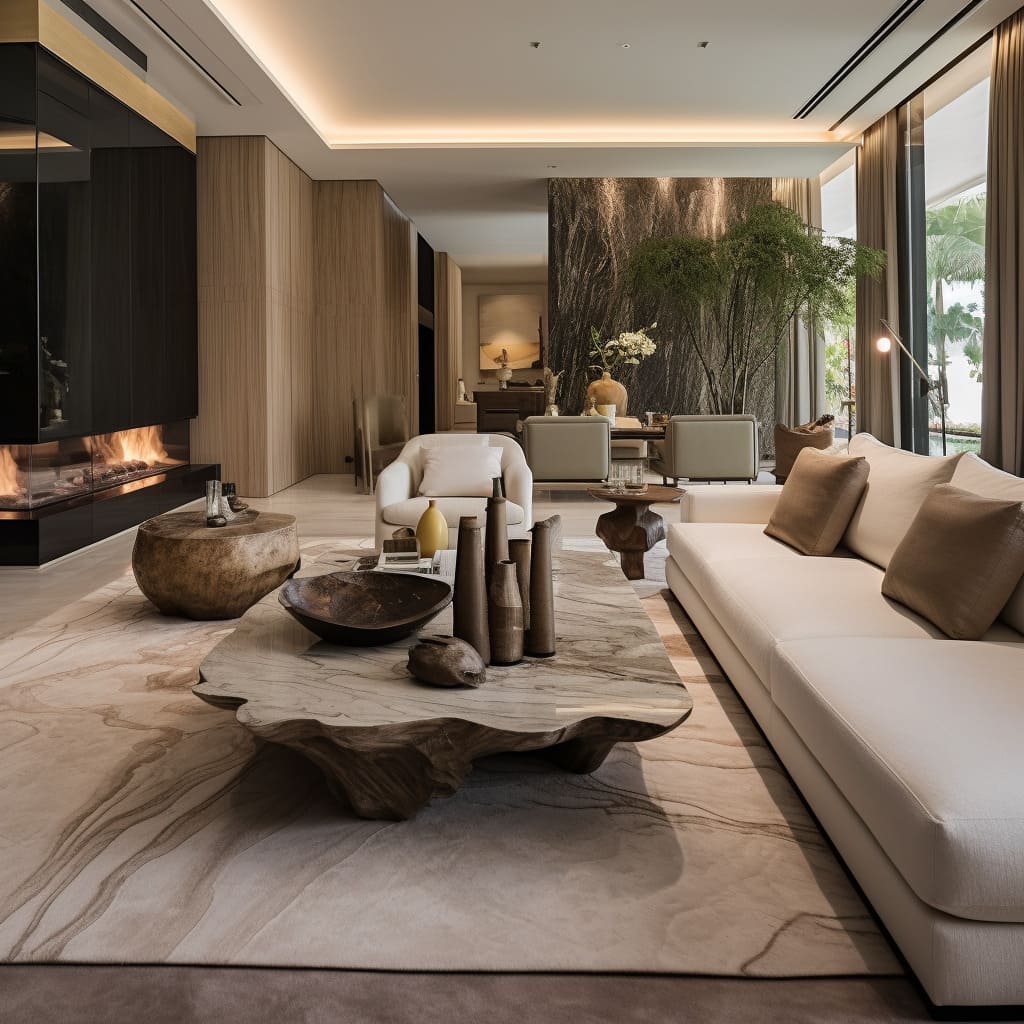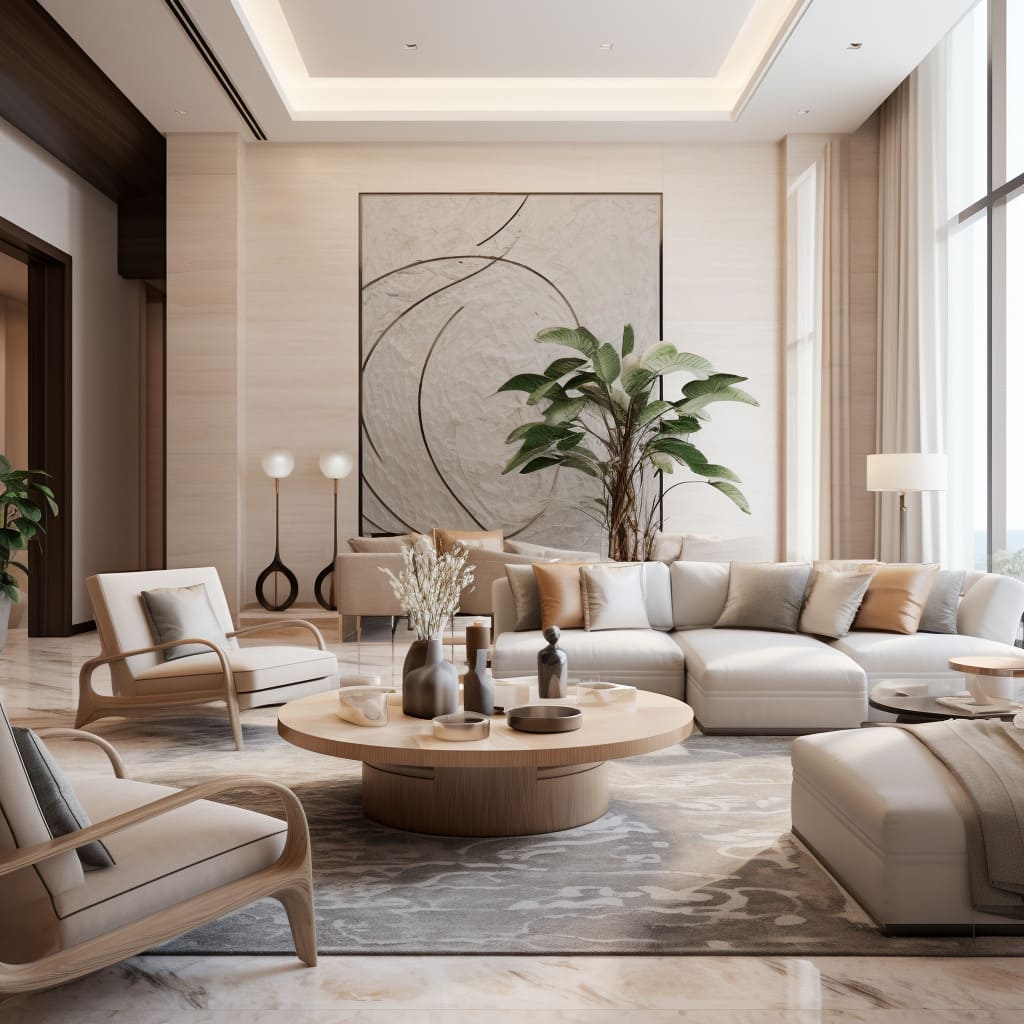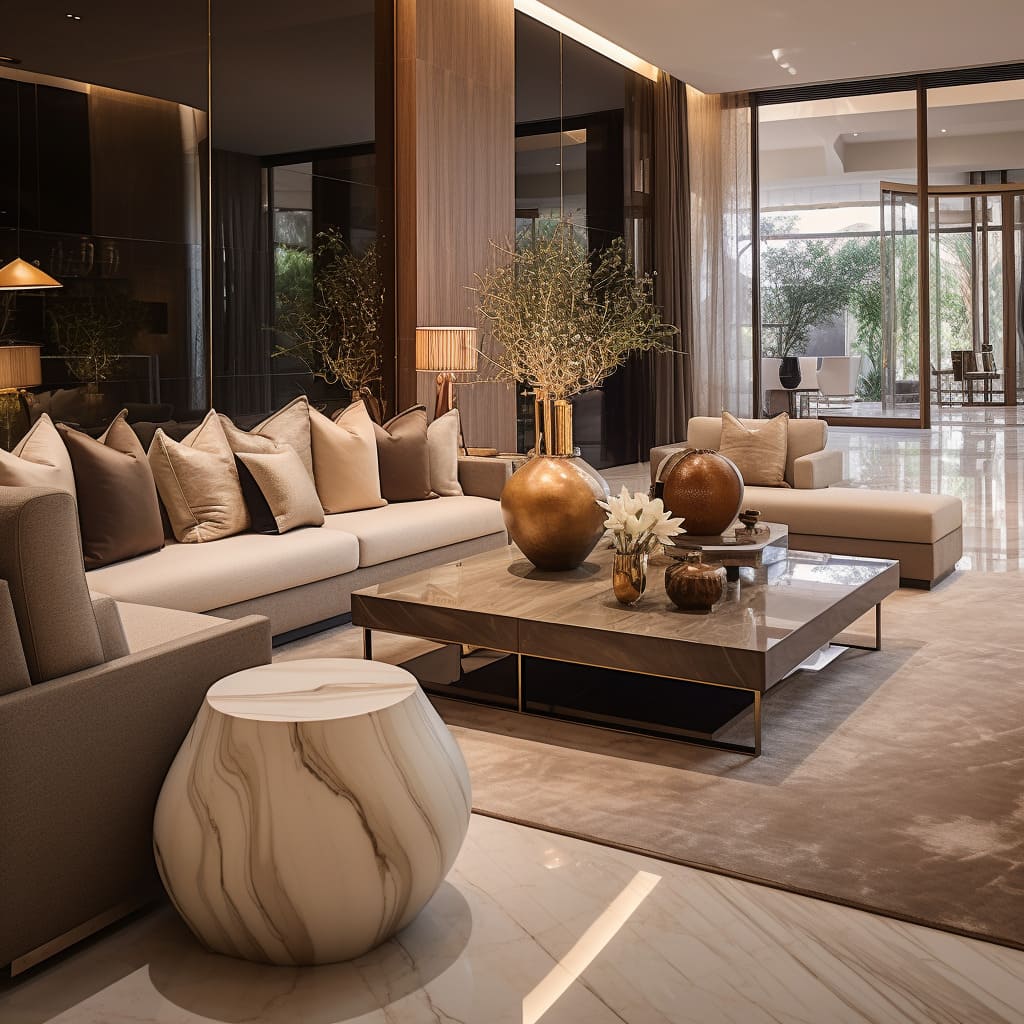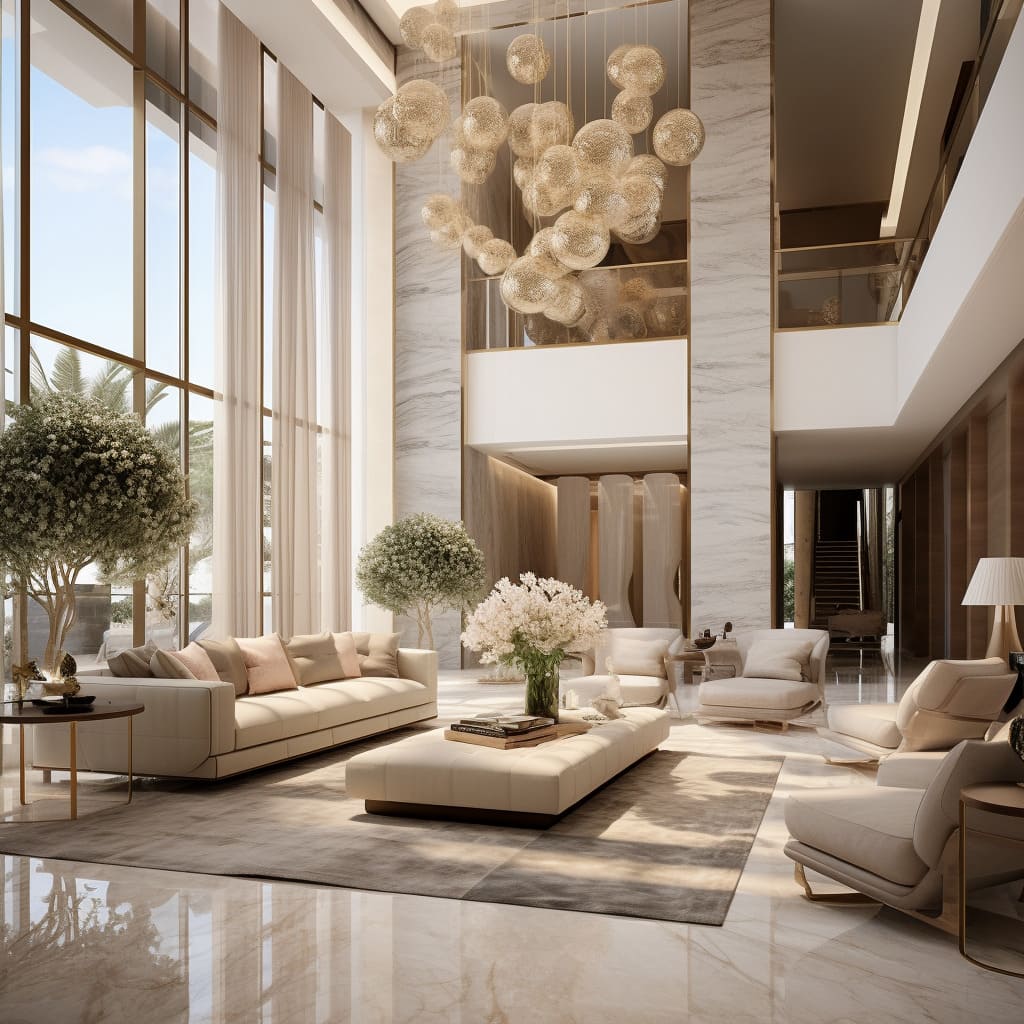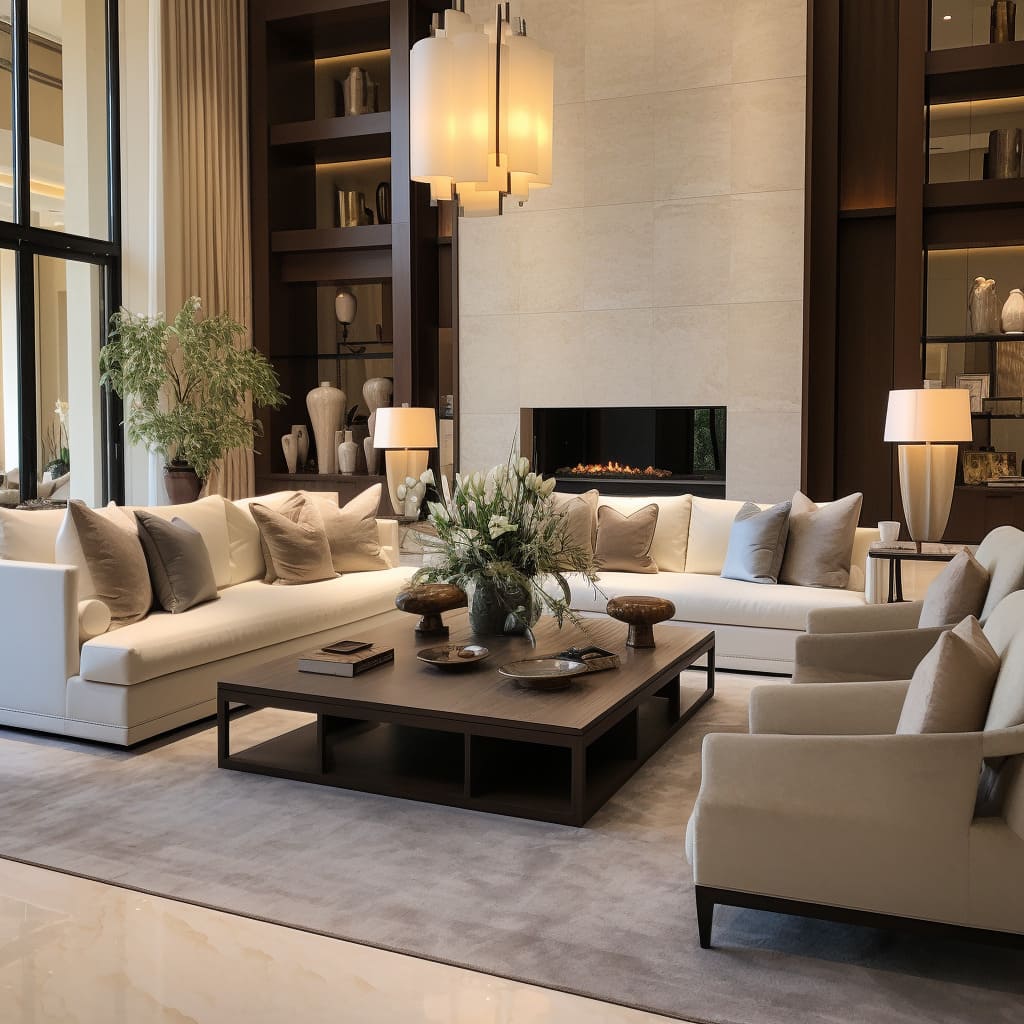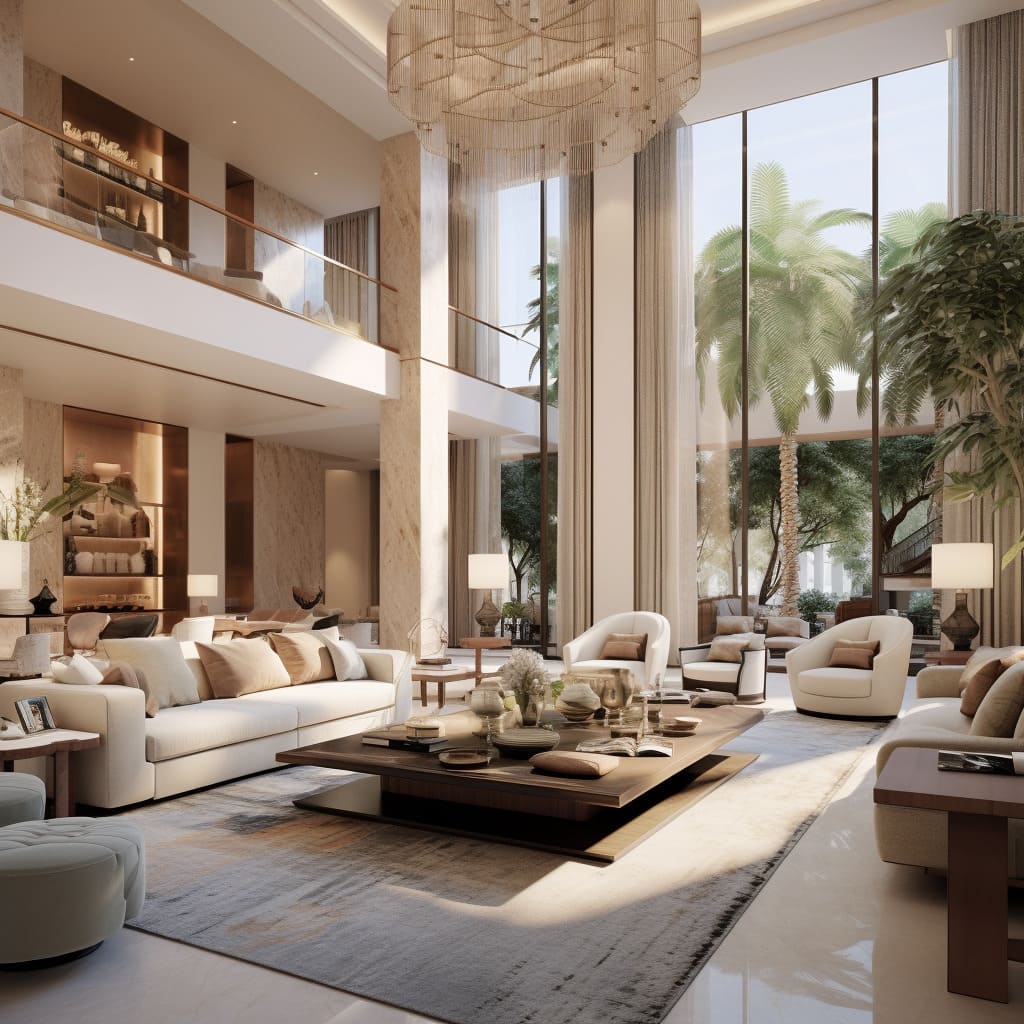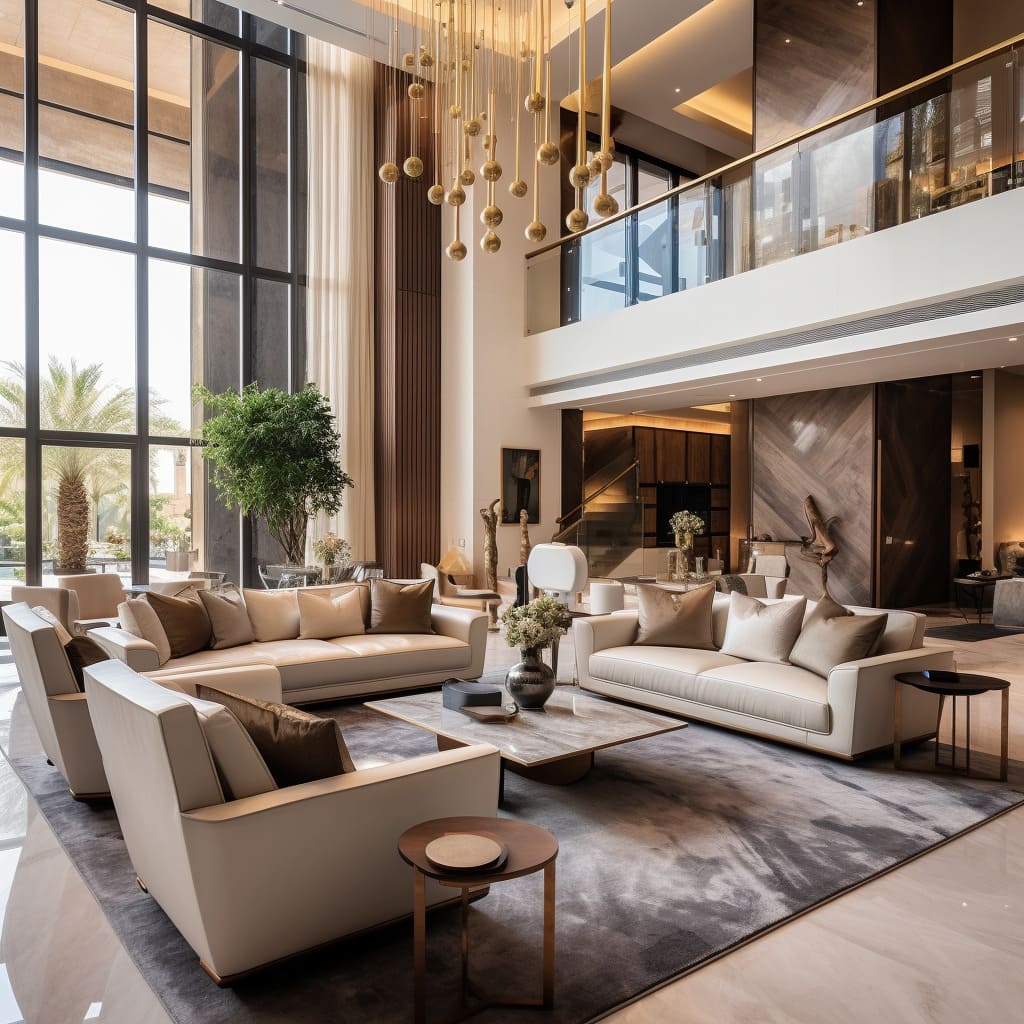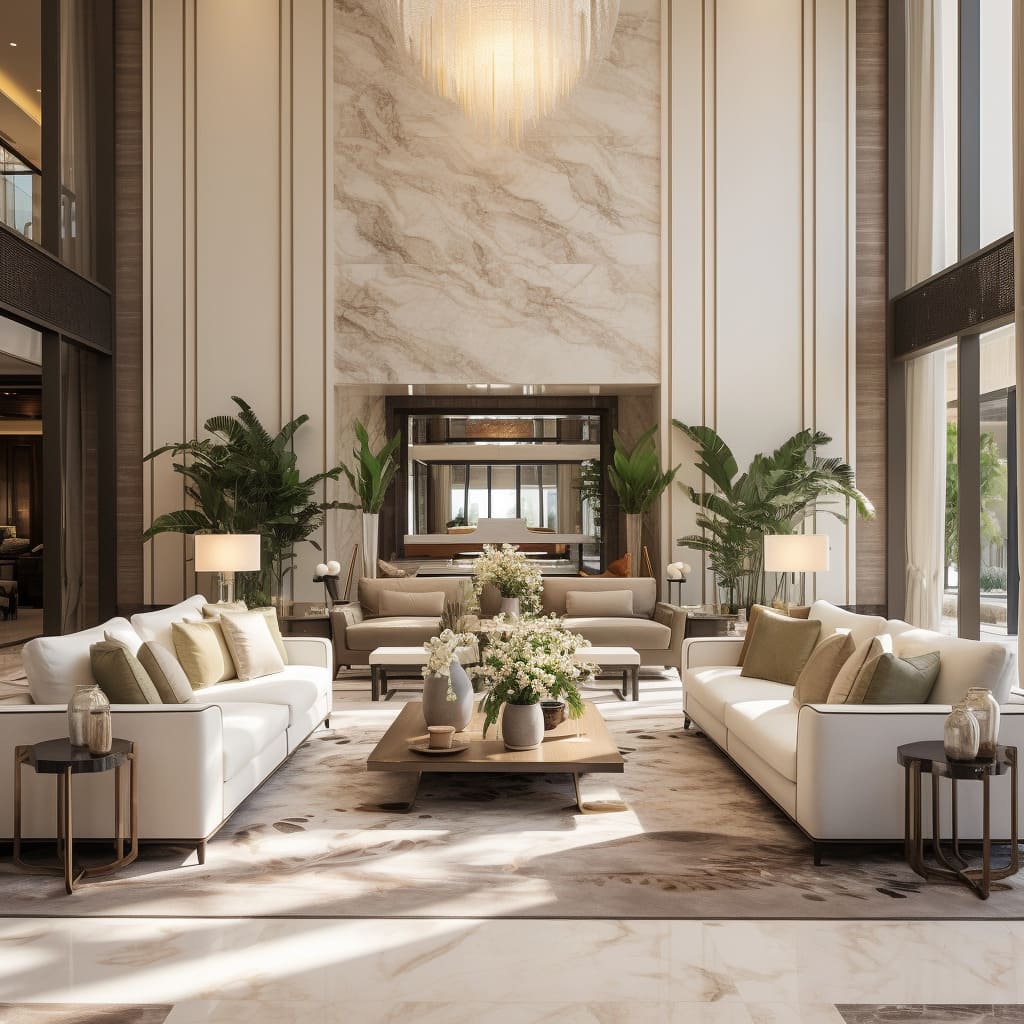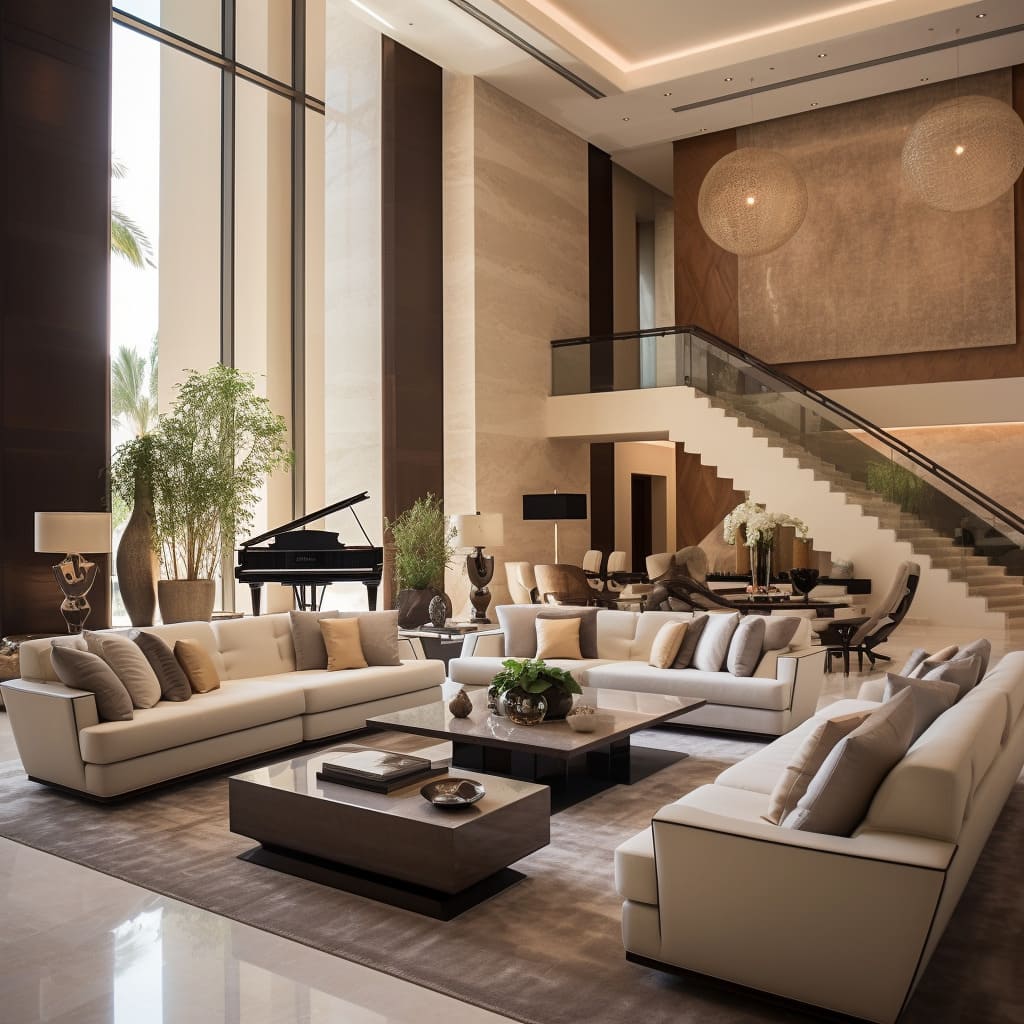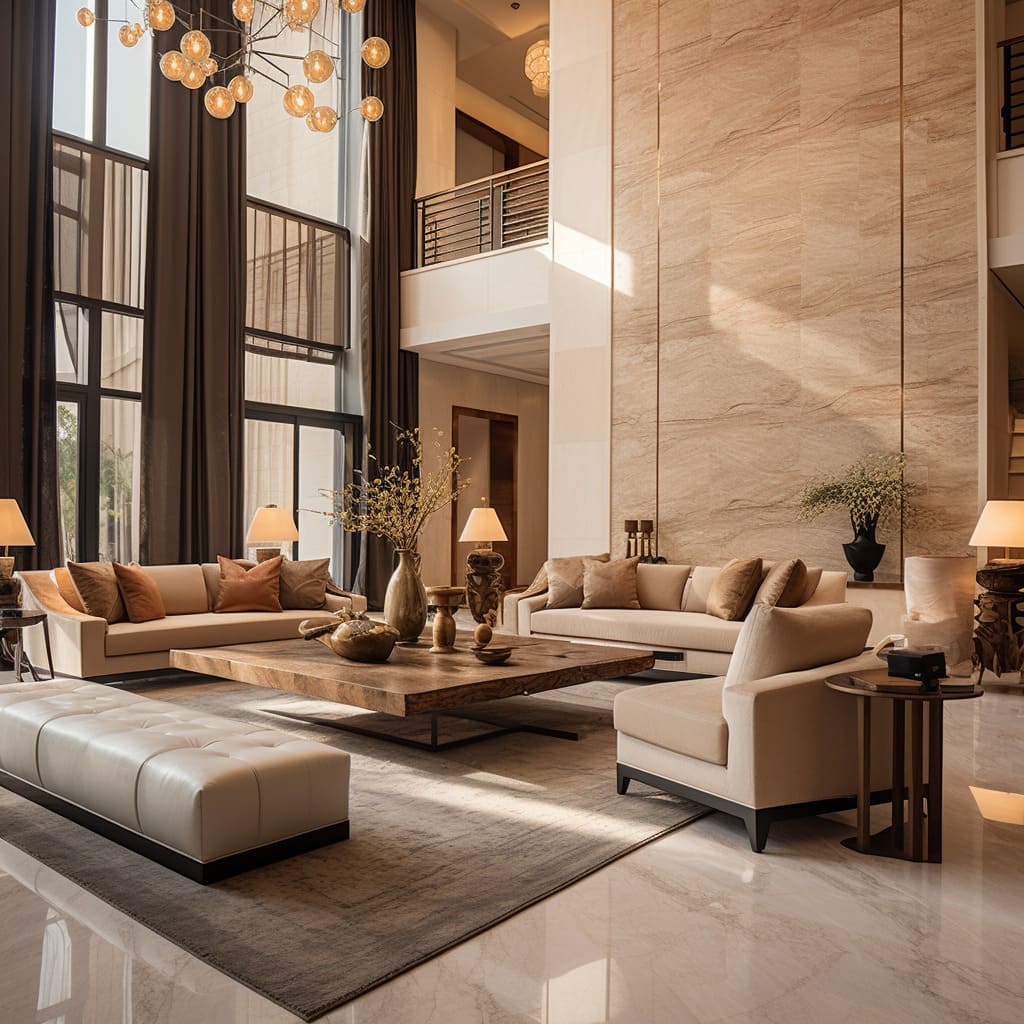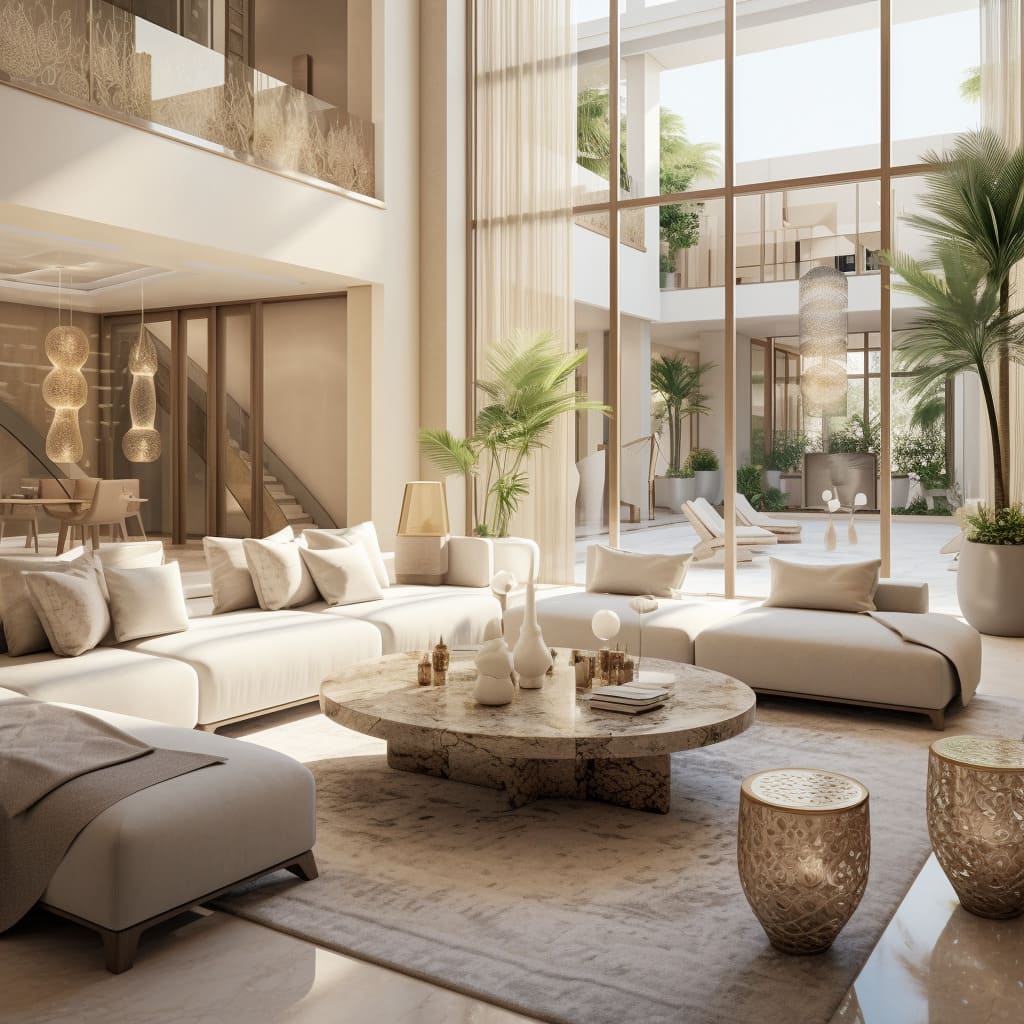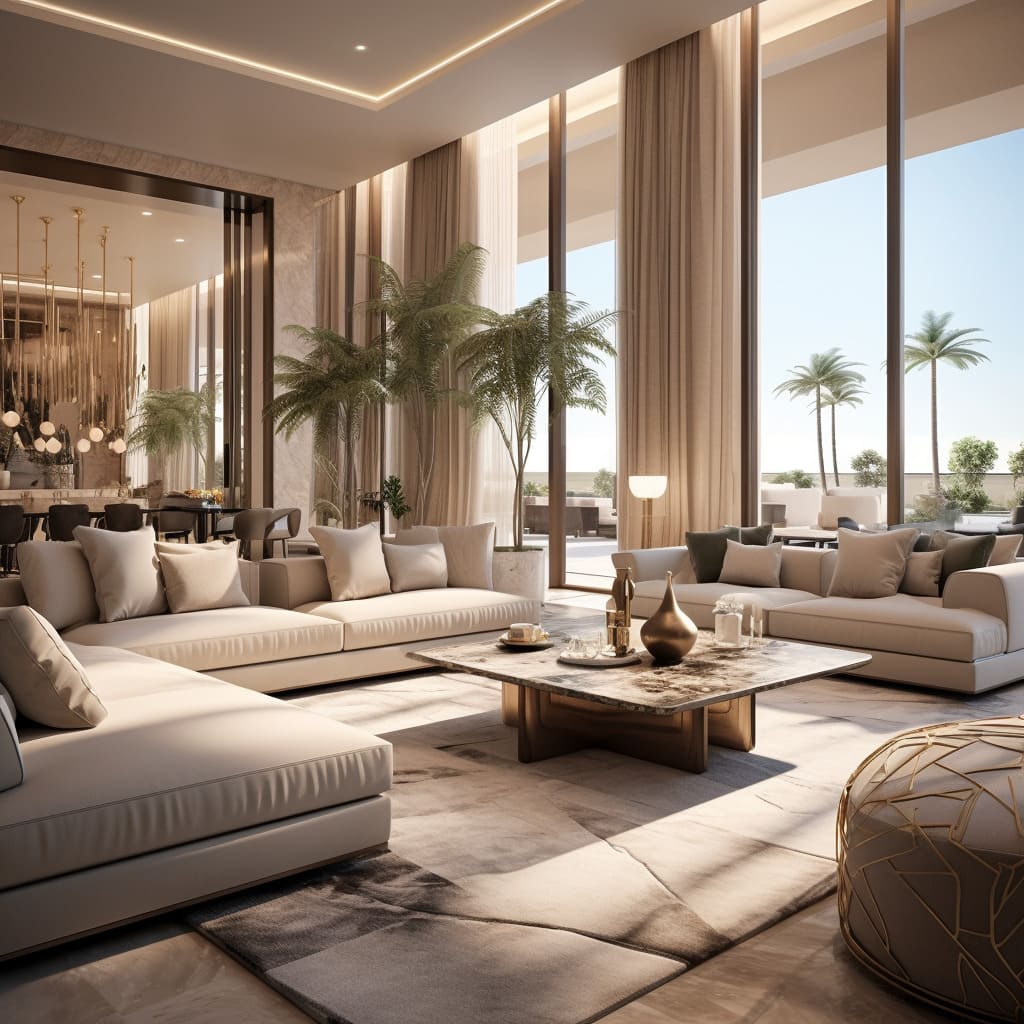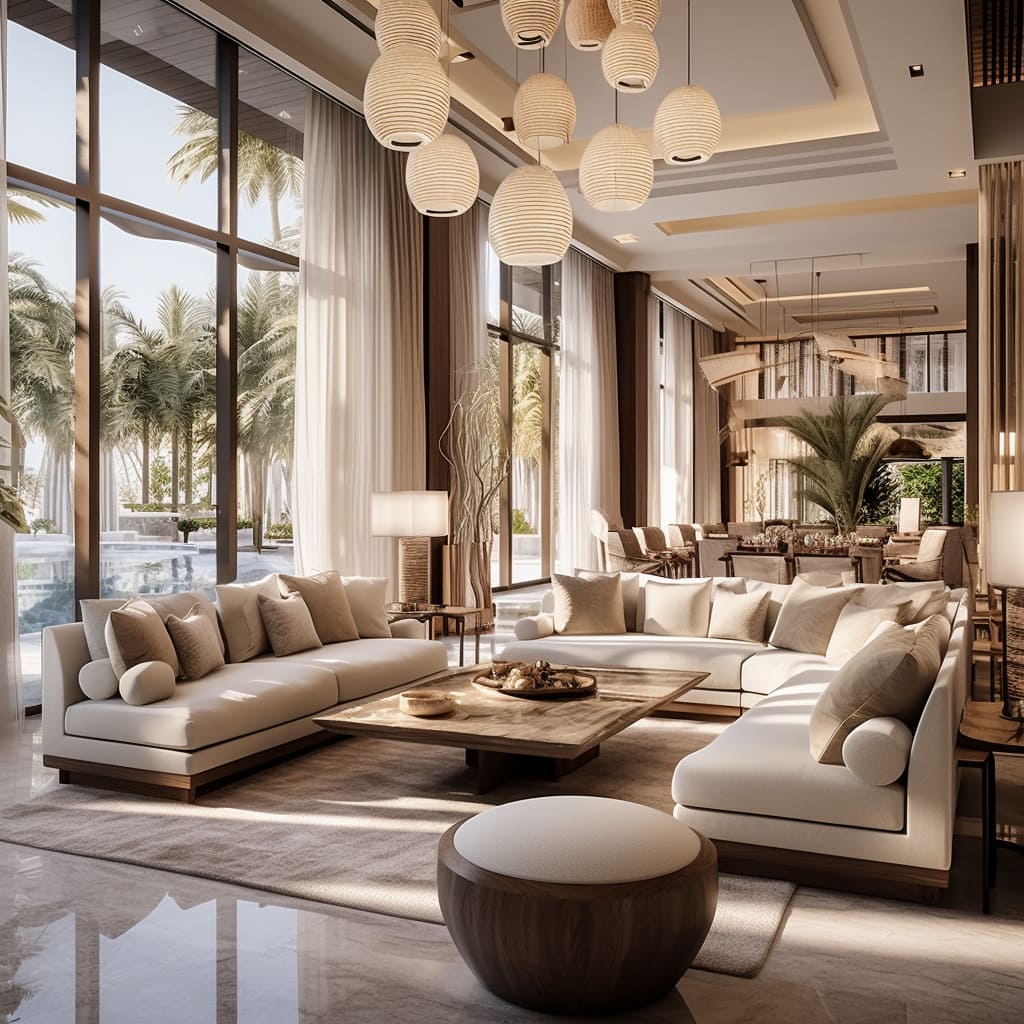Travertine stone has been a symbol of elegance and luxury for centuries, gracing the floors and walls of palaces and temples. Today, it remains a popular choice for high-end interior design, bringing its unique blend of beauty and practicality to modern living spaces.
In this article, we’ll explore the use of travertine in luxury interior design, offering tips and suggestions for incorporating this classic material into your home.
Travertine: A Touch of Elegance
When you step into a living room that boasts travertine, you’re immediately greeted by a sense of grandeur that’s subtle yet unmistakable. The stone’s presence introduces a sleek and sophisticated ambiance that’s difficult to replicate with any other material.
Travertine, in its essence, is a gift from the earth, bringing the exterior’s beauty into the comfort of your home. Its natural patterning, formed over ages, tells a story of timelessness and artistry that no synthetic could ever hope to achieve.
With its ability to reflect light, travertine can make a room feel brighter and more open, creating an airy, breathable environment that welcomes guests and residents alike.
The stone’s soft color palette plays a significant role in its elegance. Warm creams are reminiscent of a morning latte, offering a sense of calm and comfort, while the richer beiges speak of desert sands and ancient pyramids, adding an element of mystery and depth to the room.
The porous texture of travertine is not just a testament to its natural origins but also a unique feature that adds a tactile quality to the visual landscape of a room. This texture ensures that, while the surfaces may be smooth and luxurious, they also have character and a sense of history.
Designing with Travertine
When incorporating travertine into your living room, consider it as a foundational element. Travertine flooring can serve as the perfect backdrop for your design, complementing plush, taupe-colored sofas and providing a contrast to darker wood or glossy cabinetry.
As a tip, use large, polished travertine tiles to create a seamless look that enhances the spaciousness of the room.
Travertine also makes for stunning tabletops. A polished, reflective coffee table with a marble-like travertine surface can serve as a modern centerpiece, bringing a luxurious feel to the space.
Accessorize with simple ornaments and a vase with dried botanicals to maintain an organic and upscale atmosphere.
Matching Materials with Travertine
The natural beige and cream tones of travertine match beautifully with a variety of materials. For a cozy and natural look, combine travertine with warm wood tones in vertical panels or furniture.
This combination is perfect for creating a space that feels both rustic and modern.
Lighting and Travertine
The interplay of light and travertine is a dance of shadow and luminescence that can transform any room into a masterpiece of interior design. The inherent reflective properties of polished travertine can be utilized to bounce light around a room, creating an illusion of a larger space.
To further enhance this effect, consider the use of recessed lighting in the ceiling or LED strip lighting along the baseboards. These subtle lighting sources can draw attention to the travertine’s textures without overwhelming the senses, allowing the stone to become a living part of the room’s ambiance.
Beyond the general illumination, focusing on how light falls on travertine can bring out the depth and detail within the stone. For example, using directional spotlights can create a dramatic effect, especially when the light washes over a travertine feature wall, highlighting its intricate details and shadows.
Even the choice of bulbs matters; warm-toned lights can enhance the yellow and gold tones of the travertine, while cooler tones will emphasize the stone’s silvery and gray aspects, offering versatility to match any mood or setting.
Bringing Nature Indoors
Integrating travertine with elements of nature creates an enchanting, organic aesthetic that feels both curated and spontaneous. To accentuate the earthy qualities of travertine, consider incorporating water features, such as a small indoor fountain or a reflective pool.
The sound of water coupled with the stone’s visual texture can create a serene atmosphere, reminiscent of a natural spring cascading over rocks. This harmonization of elements brings an unparalleled tranquility to your living space.
In addition to greenery, incorporating natural materials like wood, bamboo, or stone in furniture and decor can mirror the outdoors and reinforce the stone’s connection to the natural world. Using pots and containers made from organic materials for your plants can also help to create a cohesive look.
Remember, the goal is to create a dialogue between your indoor space and the natural world, with travertine serving as the perfect mediator.
Final Thoughts
When integrating travertine into your living space, it’s important to approach the design with an eye for classic elegance. Travertine has been used throughout history in some of the world’s most iconic structures, and bringing it into your home carries that legacy of sophistication.
Pairing it with luxurious fabrics and classic furniture designs can amplify the stone’s regal presence, making any room feel more stately and grand.
However, travertine is not just for those with a penchant for the traditional. Its natural beauty and array of finishes make it adaptable for contemporary settings as well.
Clean lines, sleek furniture, and modern art can all be paired with travertine floors or walls to create a dynamic and current look. When designing with travertine, think of it as a canvas, one that can adapt to the evolving trends in interior design while maintaining its timeless appeal.

